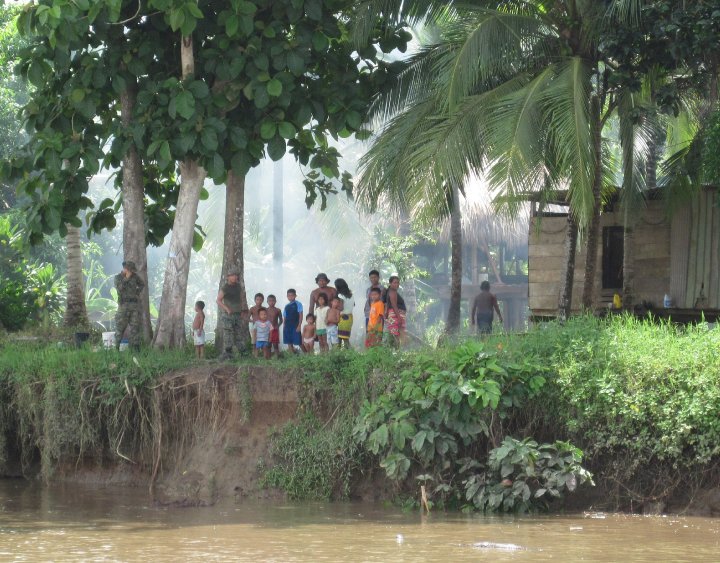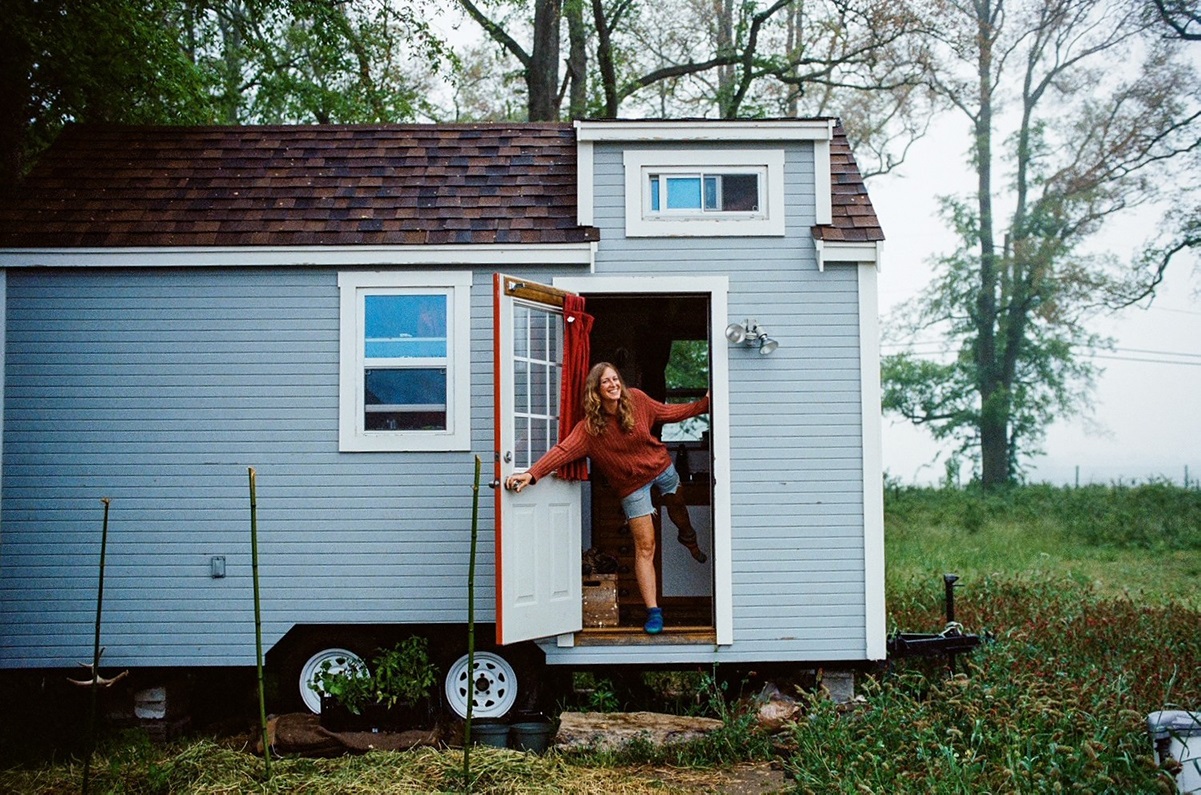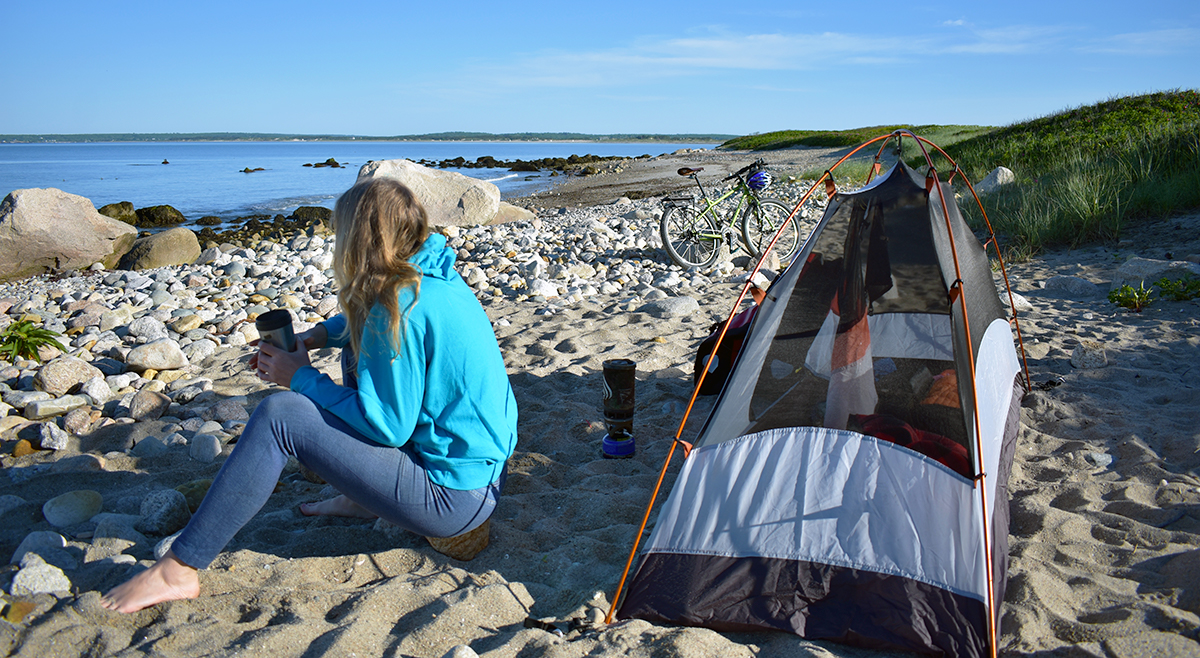How to Pack an Adventure Go-Bag
When I was 25, I thought it would be a good idea to hang out by the Panama Canal and see if any sailors would take me with them. I wandered around the docks but didn’t get any good leads. Then on the bus back to town, I turned to chat with the guy sitting next to me. He had a sailboat! He invited me to go with him and his friend Linda on a 10-day trip down the Río Tuira. In exchange for cooking, cleaning, and keeping watch, I had a ride.
A couple of days later, the three of us sailed out of the Panama Canal into open water. The Río Tuira snakes over a hundred miles from the Pacific Coast into a dense jungle in the Darién Province. We turned toward the mouth of the river and headed into the wilderness. Lush green canopy crowded either bank, and occasionally someone paddled by in a dugout canoe. It was a wild, remote place, and the farther we went, the deeper we got.
As the days passed, I realized that sailing into a jungle with a stranger I met on a bus had both pros and cons. The river was stunning but treacherous. The water rose and fell with the tides, and we were constantly either running aground or battling raging currents. The guy was really nice, but he had certain quirks that made me nervous. He liked to stand on deck in lightning storms, raise his arms toward the sky, and howl. He insisted on dragging the lifeboat behind us in the water instead of keeping it on deck, and eventually it was struck by a floating tree and broke away. Once, he fell off the boat at night and was swept away onto a river bank; Linda and I rescued him with a rope.

Eventually I realized that the sailboat could very well sink, or the guy could drive me so crazy that I’d actually want to jump overboard. I went below deck and carefully chose the items I would need to survive if I had to jump off the boat. I would need a water bottle, knife, extra contacts, and clothes. I put everything in a waterproof bag and left it where I could grab it in an emergency. This was my first “Go-Bag.”
After 10 days of sailing, we returned safely to the Panama Canal. I never had to use my Go-Bag, but I learned an important lesson: always have an exit plan, just in case.
Since then, I’ve packed many different types of Go-Bags. When I’m on long bike tours in developing countries, I always carry a small passport pocket with my passport, cash, and an extra pair of contacts (I’m nearly blind without them). I keep this on my person at all times, so if I ever get into a situation where I need to leave quickly, I can just walk (or run or ride) away. I’m always mentally prepared to leave all my other possessions behind. When I’m in an emergency situation, I don’t want to stop and think about what I need to bring with me — I want to just go. The ability to exit quickly is one of my fundamental principles for risk management as a traveler, especially as a female traveler who is often solo.
Shortly after my foray as a deckhand, I moved to Colombia and met a young Frenchman named Matthias. We bought a couple of cheap bicycles, tied on some duffel bags, and pedaled north from Bogotá toward the Venezuelan border. Sometimes we slept at truck stops, other times we camped. I kept my tiny Go-Bag strapped around my waist, even when I slept.
One night Matthias and I asked permission to camp in a town park. In the wee morning hours, a couple guys started fiddling with my tent zipper, trying to get in. I called out to Matthias, who was asleep in his tent nearby, and then sprinted out for help. I ran into the street and stopped a bus. The driver jumped out with a crowbar. By that time, the guys had already scattered. The bus driver rode away in his bus, and a neighbor came out and invited Matthias and me inside for tea and buns. We slept a few hours on his floor and then pedaled away in the morning.
It wasn’t a terrible situation. In retrospect, the guys seemed more curious than malicious, and everyone nearby rallied to keep us safe. But the ability to exit and respond quickly still felt crucial. I didn’t dillydally in my tent, wondering what I should grab. I knew my passport and everything I needed was already strapped to my body in my Go-Bag. I just had to get up and go.
That sailing trip on the Río Tuira and the bike trip across Colombia were adventures of a lifetime. I wouldn’t trade them for anything! A long journey is an incredible way to meet new people and embrace new ways of life. I believe humans are fundamentally programmed to care and connect with one another, and this is one of the reasons I love adventure cycling in the first place: there are always new friends around the next corner. There are also many types of risk that have to be managed, and it’s wise to have a game plan for lots of different situations.
In the last couple years, my life has changed a lot, and I’ve adapted my perspectives on Go-Bags to new circumstances. I now lead a very quiet life. I work on a beautiful farm in southern Massachusetts and live in a 16-foot tiny house in the farm driveway. Every day feels safe and pleasantly predictable. I don’t have to worry about jumping off a boat in the Darién or finding a safe campsite in the Colombian Andes. I just have to wake up in the morning, wander over to the farm kitchen, and figure out how to use all the vegetables. It’s a lovely life and I still feel dazzled that I get to live it.

At the same time, the predictability of my week can be daunting. I love security but I also crave freedom, and balancing the two is a constant puzzle. I miss the mountains, open roads, and wild jungle canopies. I will always be a sucker for wayward adventures that bring me closer to the edge of what I think I know. Farm life does this too, but from a different perspective and at a different pace. I love my current life, but there’s still a pull toward new adventures, and that tension is part of what balances me.
Luckily, everything I’ve learned from extreme adventures in strange places still applies to my current, quiet life. Emergencies come in many forms, and for me, daily routine can compound into a mental state of emergency. When that moment strikes, I don’t want to diddle around thinking about what to pack — I want to just go! My new Go-Bag is filled with everything I need to make a quick exit from normalcy and head out on a short bike adventure.
My Home Adventure Go-Bag contains everything I need to ride away, camp under the stars, and come back a day or two later. Sometimes I leave after work and ride back to work the next day. Other times I leave on a weekend and enjoy a long morning at my campsite. I go by myself or with friends. I’ve been known to camp in friends’ yards and have breakfast with them in the morning. These tiny trips give my life a certain sizzle of unpredictability and, paradoxically, remind me to appreciate the beauty of daily routine.
My Home Adventure Go-Bag:
- Tent
- Sleeping pad
- Sleeping bag
- Charged headlamp
- Bike patch kit/repair kit (spare tube, patch kit, duct tape, Allen keys, air pump, zip ties)
- Snack pack (dried fruits and nuts)
- Mini med kit (Benadryl, ibuprofen, band-aids)
- Stove, lighter, coffee
- Toiletries bag (contacts, biodegradable wet wipes, toothbrush and toothpaste, tiny hairbrush, shea butter lip balm, diva cup)
- Water bottles
- Rain gear
I just grab this bag, throw in some clothes and food, and I’m ready to go.
Whether you’re sailing into a jungle, pedaling over mountains, or sitting at home in your armchair, you might as well pack a Go-Bag. Life is full of both predictable and unpredictable moments. Either way, you never know when you’ll need to just go.



